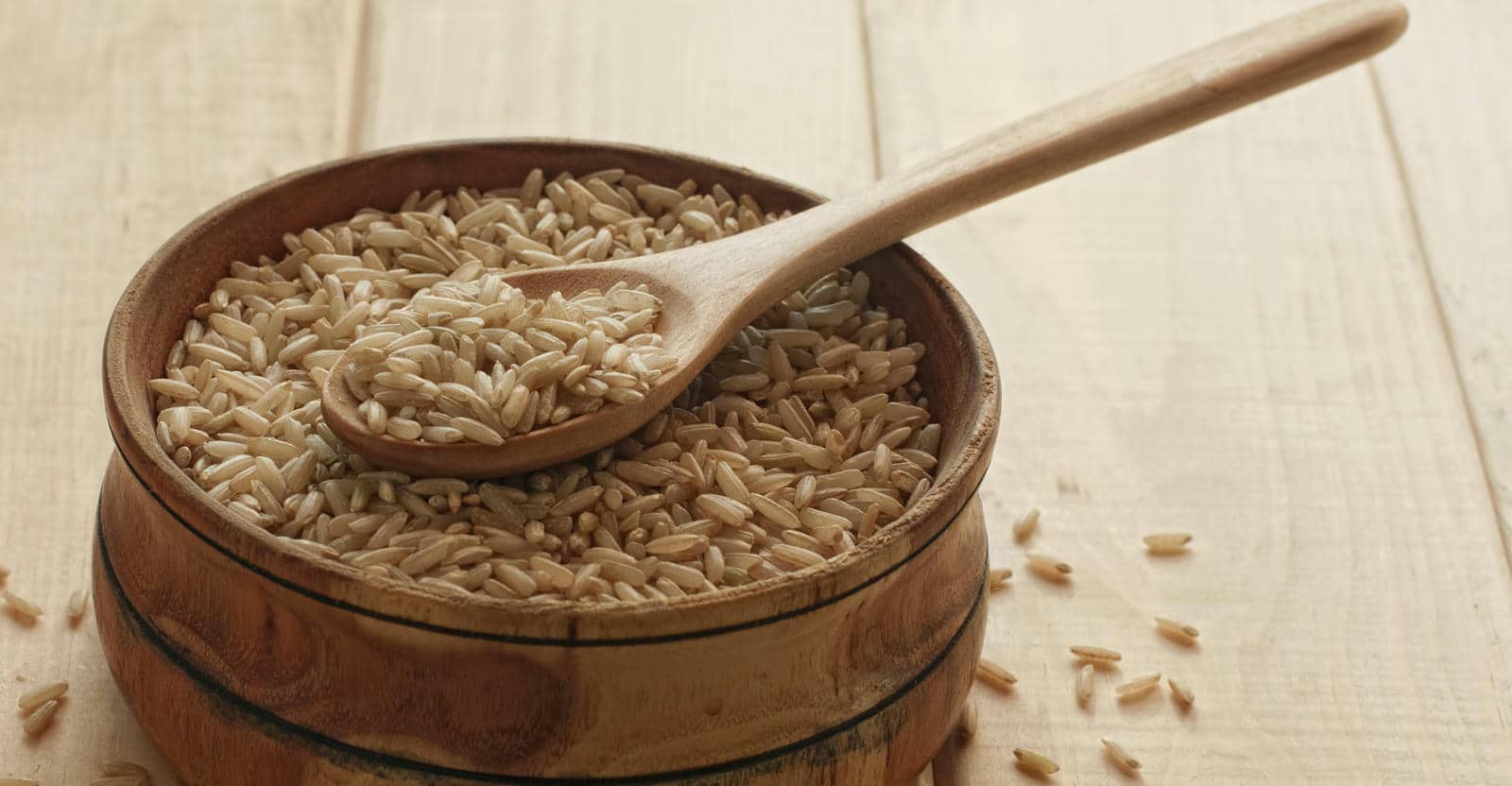Is Brown Rice Gluten-Free?
A somewhat odd question that actually comes up quite often; is brown rice gluten-free? Brown rice is inherently gluten-free, however, there are certain instances where it can come into contact with gluten and cause issues.
Gluten is a sticky type of protein that any average person can ingest without experiencing health issues, however, those with high sensitivity levels will find it difficult to do this. With the modern-day emphasis on fiber-rich, heart-healthy diets, whole grain foods like brown rice are increasingly becoming popular.
This product features all the 3 components of rice grain including the seed kernel also known as endosperm, the nutrient-rich germ center, and the fiber-rich outer hull referred to as bran. All these parts are free from gluten forms that can trigger sensitivity or autoimmune disorders such as Celiac Disease.
Brown rice can be a healthy alternative for those who are on a gluten-free diet. However, it is important to keep the following things in mind.
Causes of Cross-Contamination in Brown Rice
The word gluten is a general term referring to various plant storage proteins. In wheat, this element is called gliadin, in rye, secalin, and in barley, hordein. It’s also important to note that brown rice contains a certain type of gluten known as oryzenin, though this does not trigger any negative reactions whatsoever no matter the amount. However, there are various sources of impurities that one should watch out for when using brown rice.
Is brown rice gluten-free? Yes, but cross-contamination can sometimes occur in the kitchen. Typically, the product becomes contaminated when it touches other utensils that have come in contact with other products containing gluten. For instance, if you knead some dough inside a bowl using standard wheat flour, this should be wiped thoroughly before using that same bowl to mix other ingredients. Residual gluten molecules can infuse into your food and cause problems.
Similarly, if you have a scooping spoon for croutons, brown rice can be contaminated if the same spoon is used for stirring the rice. Such contamination might also happen in commercial kitchens for those who prefer eating out. That’s why it’s always important to let your server know that your food needs to be gluten-free.
Packaging
In addition, be wary of storage procedures used by the grocery store you’re getting your brown rice from. Do not buy products that have been stored in bulk bins, as there’s absolutely no way of telling how the food has been handled. Also refrain from buying packages that were previously used for storing other products like dry grains, baked goods or flour. Gluten can sometimes sneak into your food from these types of sources.
Furthermore, buy only pure brown rice when shopping and avoid those that have been seasoned, since these additives may easily contain gluten. While at home, remember to set aside a gluten-free section in your storage pantry. Don’t keep this food below anything that contains gluten such as flour, dry grains or bread.
This same rule also applies to your refrigerator. Sometimes contaminants can drop down into the stored brown rice or its container which can start to spread contamination. Traces of the substance can make their way to your food when contaminated containers come in contact with utensils are also used to cook or serve your meal.
Carefully Read Labels
Some food processing companies often declare whether their brown rice has gluten inside or not, especially in cases where the same facility is used to process wheat products as well. If you see a label that says something like “manufactured in a wheat processing facility”, then refrain from buying that particular item.
As declared by the American Food & Drug Administration, for any meal to be considered gluten-free, it should have no more than 20 parts per million of gluten. While pure brown rice is safe to consume, still read the package to check if it has been labeled accordingly by the manufacturers.

Gluten is most commonly found in food products, though studies show that it can still hide in medicine or vitamin supplements such as those that contain brown rice as a constituent ingredient. This happens when the supplements are infused with wheat to help them taste better.
After getting an official diagnosis of gluten sensitivity or Celiac Disease, schedule a consultation with a qualified dietitian or nutritionist to learn the basics of maintaining a diet that’s free from gluten and generally lead a healthy lifestyle. Having digestive issues? Check out our post with 13 tips on what to do.
It has scientifically been proven that the only treatment for Celiac Disease & gluten sensitivity is abiding by a gluten-free diet for life. Any form of wheat, barley or rye should be removed from your diet for good. Research is still ongoing to identify long-term treatments for this condition, though currently there are no medications or clinical surgery procedures that can cure the disease.
Gluten is toxic to people suffering from this condition, but not like allergic reactions where patients often go into anaphylactic shock. Here, the case is different as physical symptoms such as skin rash, diarrhea, headaches, and intense abdominal pain are the ones which will show.
Continuing to consume gluten even after exposure places one at a higher risk of developing long-term intestinal damage. Likewise, there are no medical treatments known that can keep your body from responding after gluten has been consumed.
If you have Celiac Disease but still mistakenly consume the substance, the resulting autoimmune reaction can damage your villi which are tiny fingerlike projections found inside the small intestines. With time, the organ will become less effective in absorbing essential nutrients and can lead to malnourishment.
However, as highlighted earlier, the oryzenin gluten found in all types of rice including brown does not cause such reactions, meaning your villi will remain healthy even after consumption. Brown rice is also used nowadays by parents who want to help their kids avoid autism by including it in their diet.
Summary
Brown rice is listed as a whole grain and apart from being gluten-free, it also helps lower cholesterol levels which helps reduce the risk of contracting coronary heart problems. These nutritional properties make it a great choice for those who are seeking to lead a healthy lifestyle.
However, buyers still need to watch out as it can sometimes be contaminated during the manufacturing or storage process. So is brown rice gluten-free? Yes, but you still need to be careful, as with all foods. Check out our other post on is rice gluten-free?

I react to brown rice the same way I react to wheat, with stabbing pains and bloating.